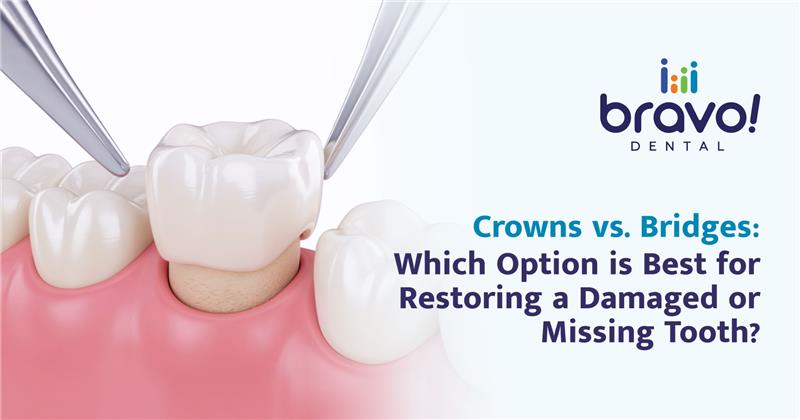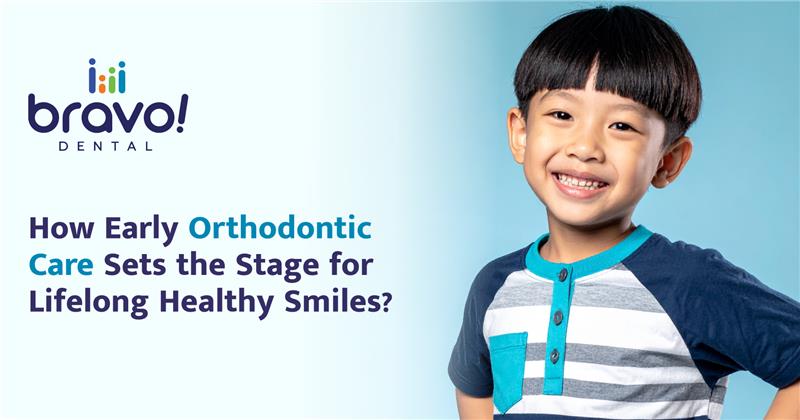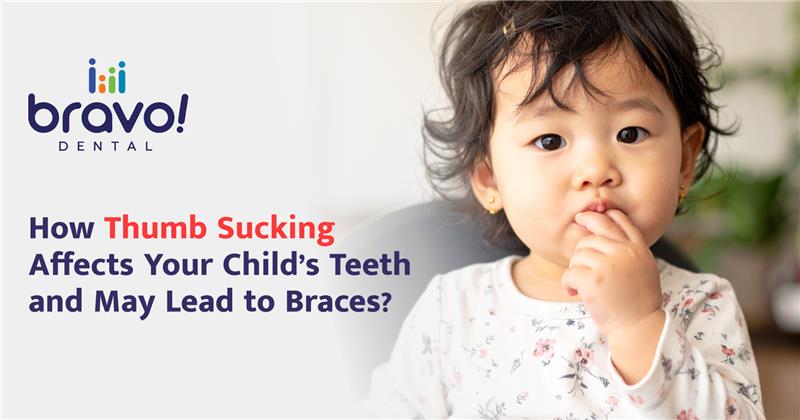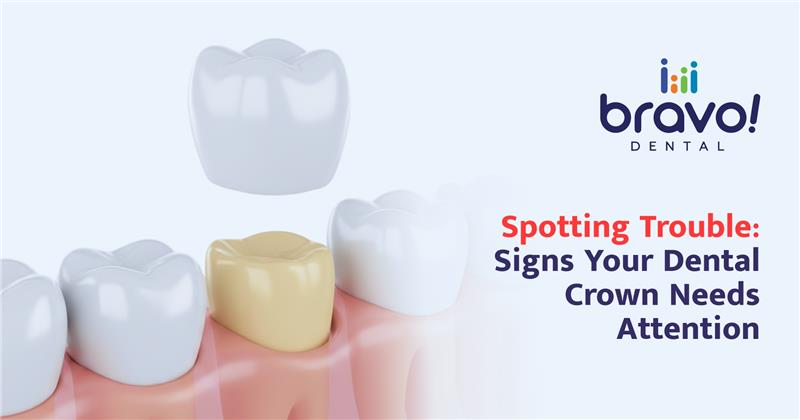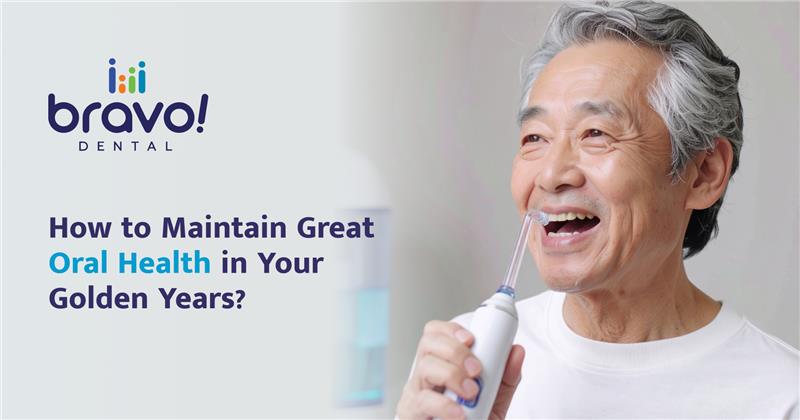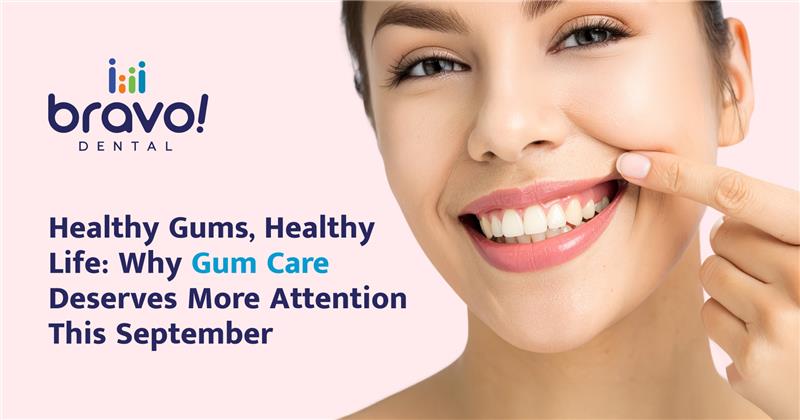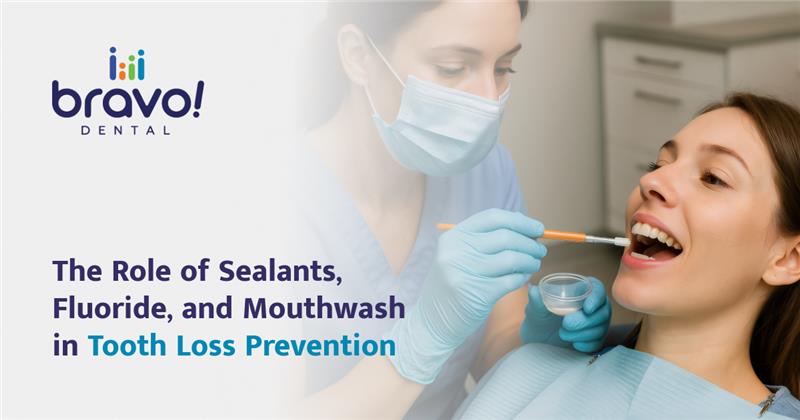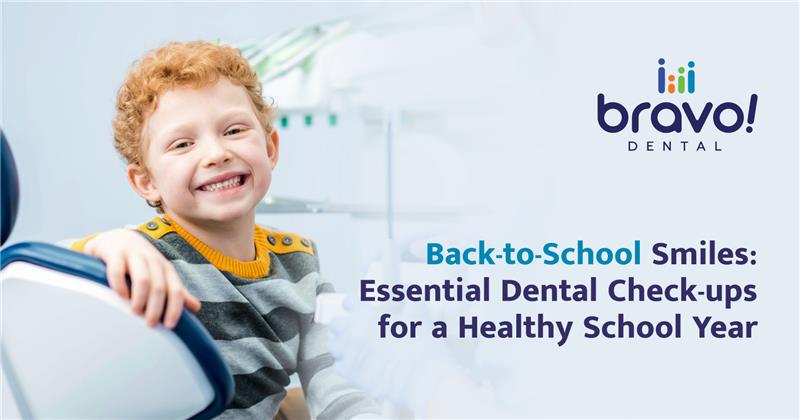If the tooth is damaged or gone completely, your dentist might mention a crown or a bridge. Both are strong, natural-looking ways to restore your smile. They just serve slightly different purposes. Knowing which one you actually need can save you time, money, and a lot of confusion.
Let’s Start with Crowns
If your tooth is damaged but still hanging in there, a crown might be your best bet.
Crowns act like helmets for your teeth, and they cover the entire visible portion, protecting it from further damage while restoring its shape and strength.
We usually recommend a crown when a tooth is:
- Cracked or fractured
- Severely decayed
- After a root canal
- Misshapen or discolored
Crowns can be made from porcelain, ceramic, or other durable materials that blend beautifully with your natural teeth. When placed properly, they can last 10–15 years or more with good care.
A crown fixes your tooth, and it also prevents small cracks or decay from turning into extraction-level problems.
What About Bridges?
Now, if you’re missing a tooth (or a couple of them), that’s where bridges come in.
A dental bridge quite literally “bridges the gap” between two healthy teeth. It’s made of one or more artificial teeth called pontics, held in place by crowns on either side.
Bridges are ideal when you have:
- One or more missing teeth in a row
- Strong supporting teeth on both sides
- No need (or desire) for an implant
They restore your bite, your smile, and your confidence. Because when you’re missing a tooth, it’s not just about looks. Can we all agree to that? It affects how you chew, speak, and even how your jaw aligns over time.
How to Decide Between the Two
Here’s where your dentist steps in. But a few rules of thumb help:
| Situation | Best Option |
| Damaged but intact tooth | Crown |
| Missing tooth with healthy neighbors | Bridge |
If we can save the tooth, we usually go with a crown. If the tooth is gone, a bridge often fills that space beautifully.
And yes, sometimes it’s a combination. A bridge supported by crowns on either end is one of the most common restorative treatments we do.
Longevity and Care
Crowns and bridges both last for years, but they need the same care as natural teeth. Brush twice a day, floss around them, and keep up with checkups.
We’ve had patients walk in worried about replacement after 10 years, only to find their restorations still solid. Regular maintenance really does make all the difference.
The Bottom Line
Whether it’s a crown protecting what’s left or a bridge filling what’s gone, both options help restore comfort, function, and confidence.
At Bravo Dental, we’ll walk you through what your tooth actually needs. No guesswork, no one-size-fits-all solutions. Just the right care for your smile.
